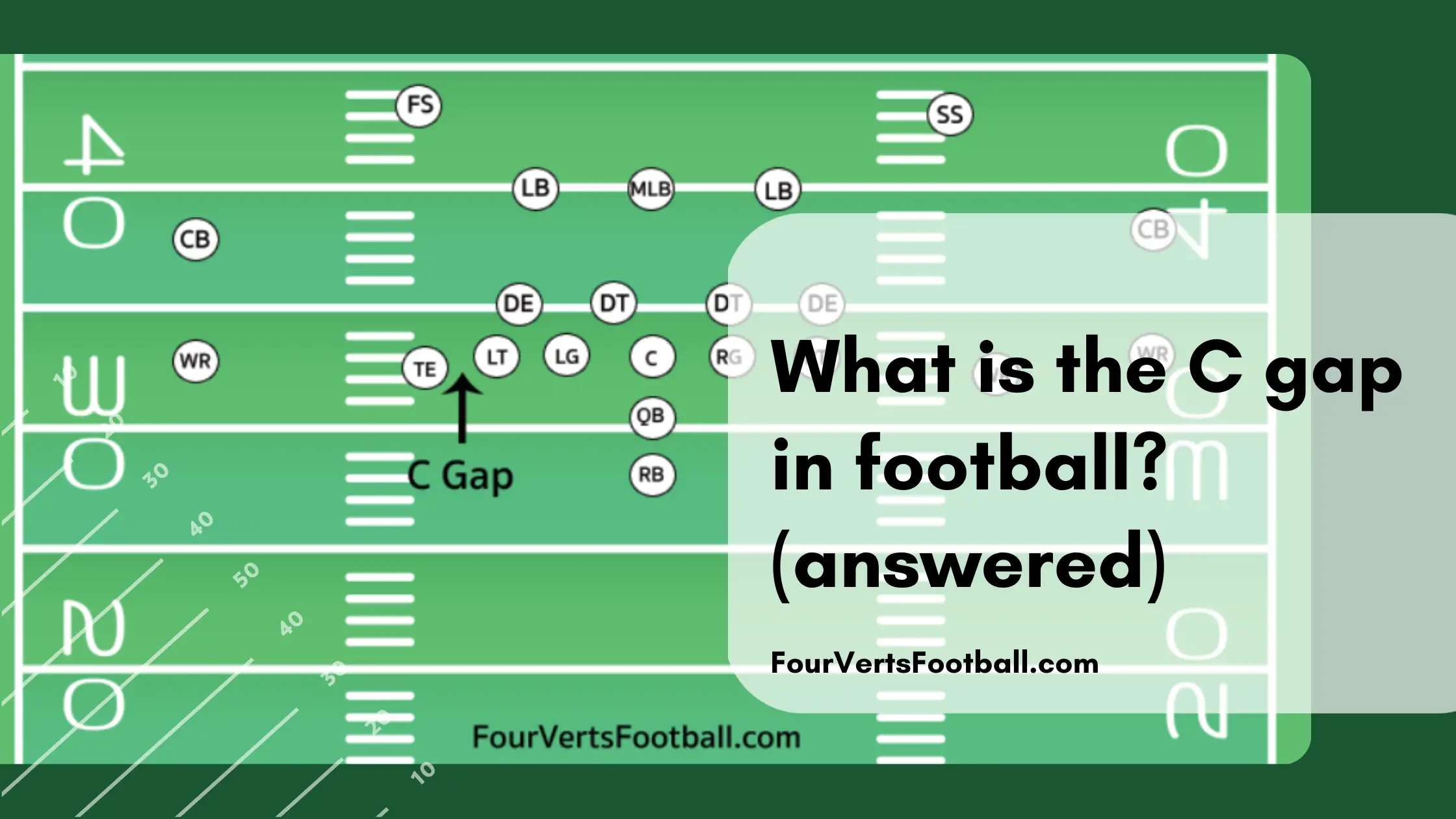In football, the spaces between offensive linemen are referred to as gaps. These gaps are labelled with letters in alphabetical order from the inside out.
The B gap in football represents the area between the offensive guard and the offensive tackle. There are two B gaps on an offensive line.
The B gap terminology is used by both the offense and the defense when targetting this area between the guard and the tackle.
The offense will use the B gap as a running lane to carry the ball through. While the defense will pass rush and clog up this section of the field with their defensive line.
Clogging up the B gap
When playing run defense in football defensive linemen and linebackers are often assigned specific gaps to cover in the offensive line.
The idea is that these players will run into their assigned gap and not allow the ball carrier to get through.
Some defense like the 4-2-6 utilize a one-gap system in which each defender is only going to have one gap to cover. While others use a two-gap system which has defenders responsible for covering two gaps.
A one-gap system would have one defender assigned to each B gap. This allows these players to play incredibly aggressive as they are able to rush this gap the second they identify it is a rushing play.
A two-gap defender on the other hand will have multiple gaps to cover. For example, this play could be responsible for the strong side B gap and A gap.
These players must be a little more conservative with their approach as overcommitting to one gap can be a costly mistake. Two gap players must wait until they determine which hole the ball carrier is attempting to go through.
This way they can make sure they do not fill the wrong area between offensive linemen.
Generally speaking, it will be defensive tackles and linebackers that fill up the B gap in defense. Edge defenders are more likely to fill the C gap which is the area outside the offensive tackle.
Pass rushing
When rushing the quarterback teams are also going to have specific gaps assigned to each player. Instead of just running at the quarterback in general they will have a specific area of the field they are looking to attack.
Oftentimes defensive players will switch gaps or overload gaps in order to confuse the offensive lineman.
For example, a team may line up several players right on top of the C gap prior to the snap. Once the play starts several of the players will move in another direction and one will rush that gap.
This can make it difficult for the offensive players to identify who to block.
On regular pass-rushing downs, the B gap will usually be rushed by the defensive tackles.
In the B gap you may get a one-on-one matchup against the offensive guard but on occasion, the center will help out as well.
Rushing the ball
The offense is also going to utilize the B gap in football by carrying the ball through it.
On offensive rushing plays there is always going to be a pre-determined gap that the ball carrier is going to target.
All the offensive players will know this gap and will look to move defenders away from that area.
When running the ball through the B gap the blocks of the tackle and the guard are going to be incredibly important.
The guard will have to block the defensive tackle and make sure he does not make his way between the guard and the offensive tackle.
The offensive tackle will have to block the edge defender pushing him towards the outside. If executed correctly these blocks should leave a hole for the ball carrier to go through.
The offense will also send lead blockers through the gap first on some rushing plays. usually this is done by a fullback.
This player will go through the hole first and block the linebackers or defensive backs waiting on the other side.

